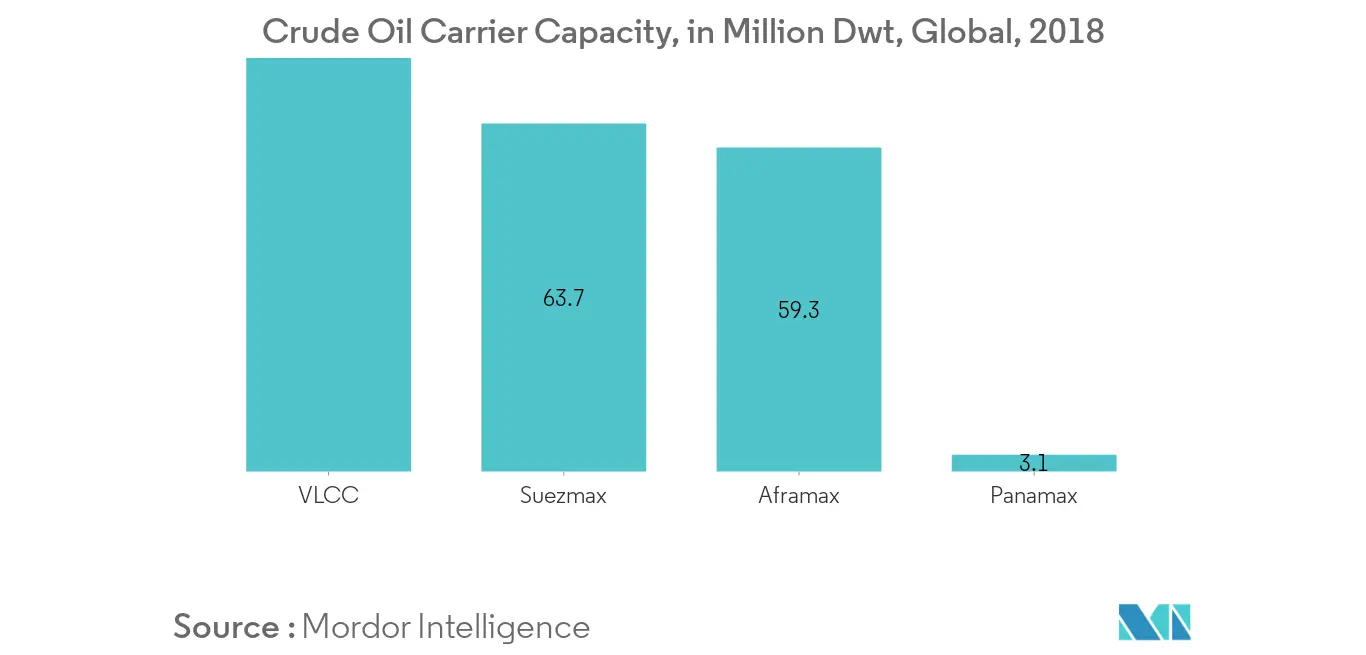Market Trends of Crude Oil Carriers Industry
This section covers the major market trends shaping the Crude Oil Carriers Market according to our research experts:
Very Large Crude Carrier to Dominate the Market
- VLCC have a size rang between 180,000 to 320,000 DWT, and are capable of passing through the Suez Canal in Egypt, for which these carrier are extensively used around the North Sea, Mediterranean and West Africa. Its dimensions is of 470 m in length, beam of up to 60 m, and a draught of up to 20 m.
- Among all the crude carriers demand, VLCC has the highest demand, followed by the demand for Suezmax. During 2018, demand for VLCC has increased around 5% and is expected to grow with decreasing spot rate of VLCC, and increasing demand for crude trade, due to depleting domestic production, especially in the Asia-Pacific region.
- During 2018, the highest demand arises between the Asia-Pacific and the Middle Eastern countries. The Middle East is one of the largest producers of crude oil, export its maximum volume to Asia-Pacific, making the Middle East Gulf (MEG)- Asia-Pacific as the highest demand for VLCC crude tankers.
- Regarding the crude fleet growth, VLCC has experienced the maximum growth, with a 4 % growth in 2018, in comparison to the preceding year.

Europe to Dominate the Market
- Europe has the maximum number of crude tankers, followed by Asia-Pacific. With around 55% of total crude oil tankers, Europe has the highest deadweight tons of tankers around the world.
- Greece is the prominent country among the Europe that holds the maximum numbers of the crude fleet company, with 167 crude carriers individually.
- It is expected that, with the growth of trade crude volume around the world, Europe is likely to expand its crude carriers by around 5%, during the forecast period. Moreover, Europe is more concentrated on having less pollutant crude carrier. It is estimated that Greece is building ten new liquefied natural gas (LNG) crude oil carriers, constructed by Hyundai Heavy Industries, that is expected to create a new milestone in the crude oil carrier market.


